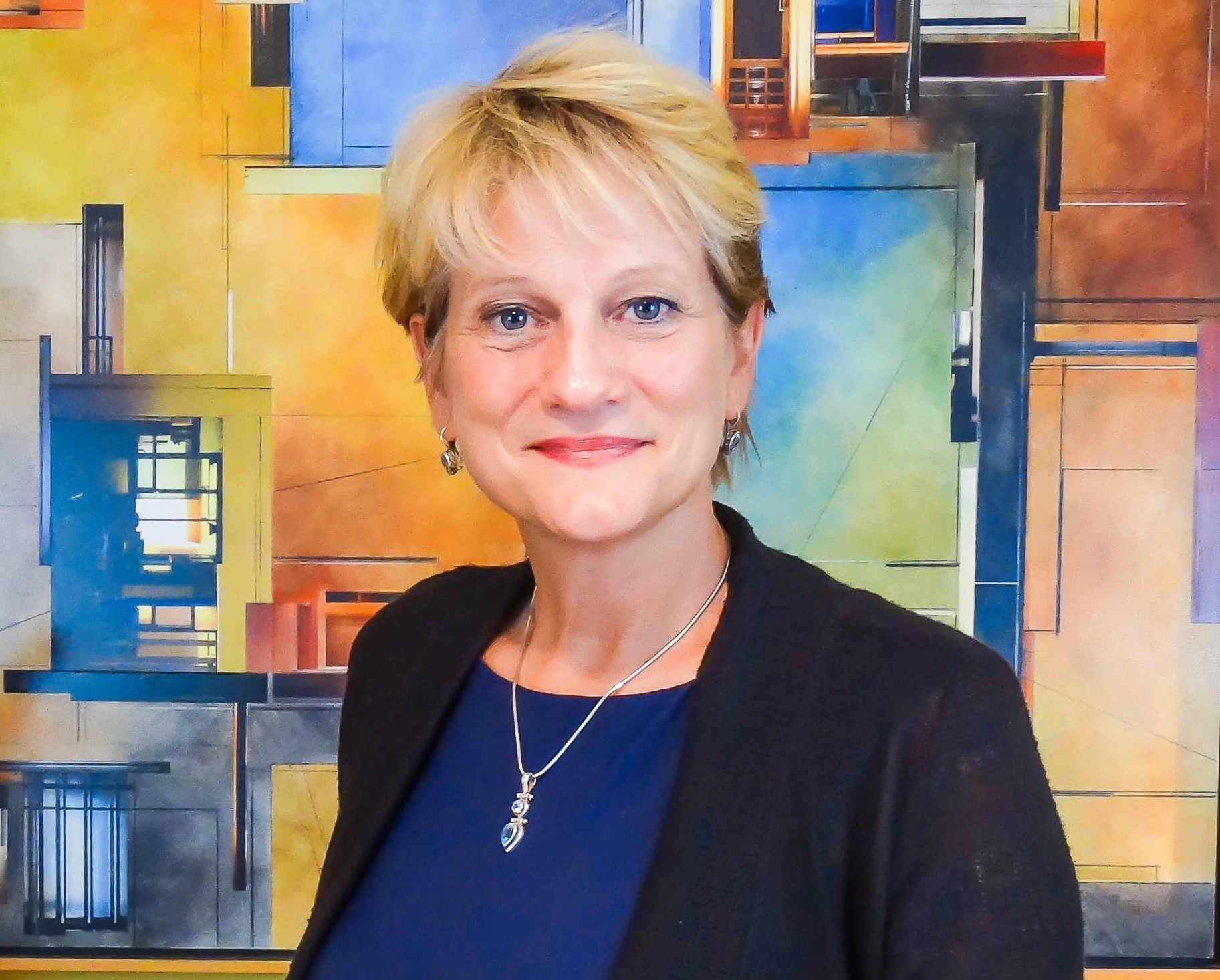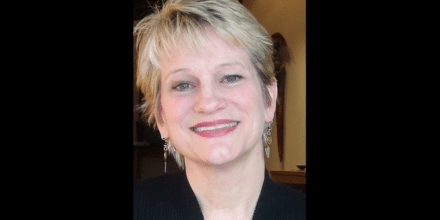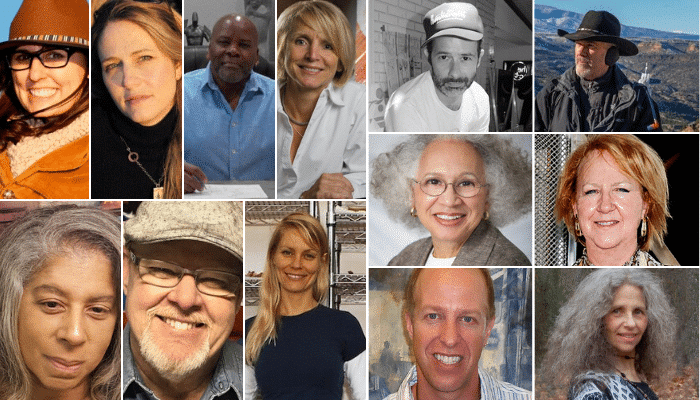Carolyn Edlund is the Sales & Events Director at the Clark Hulings Foundation, and our resident subject matter expert in Sales Strategy. In the first episode of this two-part podcast, Carolyn joins us to answer questions about making a creative career virtual. Artists and makers, you can make a great decision to thrive during the pandemic and beyond: learn with Carolyn and the CHF Faculty in real time by registering for the online The Virtualize Your Art CareerTM Conference Oct 19-30th.
Carolyn is the founder of ArtsyShark—a popular blog that publishes features on artist portfolios and articles on the business of art—and the former executive director of the Arts Business Institute. An artist herself, Carolyn pivoted to sales in the art-publishing business—she learned the world of price points, merchandising, building collections, and closing deals, by working a territory and becoming a top rep. She has designed curriculum for multiple art-business platforms and has presented hundreds of live seminars for artists and makers.
Selling Art During the Pandemic
- “Artists are being pushed into getting online and becoming experts at communicating and selling online. We don’t have much of a choice. The events are closed, postponed, canceled. They’re not happening in person. And as wonderful as the in-person events are (and, you know, we’ve traditionally relied on them) just like Hiscox [Online Art Trade Report 2020] noted: this is a transformation. We’ve been moving towards an online economy, an art industry that is robust in the online space, and this is forcing the issue.”
- “This is putting people in a sink or swim position where you’ve got to make decisions. You aren’t going to change your whole life, but you’ve got to make decisions about getting into the online market and making it work for you. And that, to me, is a huge opportunity. It might not be something that every artist is looking forward to, but ultimately they will really benefit from it.”
Opportunities & Challenges of Selling Online
- “It becomes very crowded when everyone is jumping online—and we know that’s true because art website providers are reporting record numbers of new clients coming in. They all want to set up websites.”
- “Anyone who is in the virtual marketplace has to fight for attention—establish that space, gather the people who are their followers, either through social media profiles or a list that they’ve built so that they can continue that conversation, and then use those interested people to turn into customers and clients.”
- “The personal touch is very appreciated these days. If you’ve got a collector who feels like they know you, they like you, they appreciate your work, and you say: ‘I want to reach out to you because I’ve got a new body of work and I haven’t shown anyone yet. But you own two of my paintings, and I really want to give you first dibs. How about we jump on a Zoom call? How about we literally get into a face to face conversation. I’ll show you what I’ve got.’ I like the personal outreach. And even though that might be a little bit scary, I think that over time, as you get to know your customer base, there will be people that you can reach out to and you’ll find that they appreciate and love hearing from an artist, and love talking with you, and that that engagement excites them. It’s part of the collector experience.”
What Does Virtualizing Your Art Career Mean?
- “There’s going to be a range for some people. It may only be that they get a website, and then they’re continuing on with what they’ve been doing for years. For other artists, virtualizing means a new format.”
- “For example, you might be an artist who teaches. You’re not going to be teaching in person right now, but you might be building courses on an online learning platform, you might be teaching through YouTube.”
- “If you are an artist who typically offers reproductions or is considering it, you might take advantage of print-on-demand technology. And that’s going to allow you to simply upload a high res image of the painting that you want to sell, and then allowing those print on demand vendors to take the order and fulfill it without you being a part of that process. So that would be taking advantage of virtual tools to actually produce.”
How to Build A Disruption-Proof Business
- “The core strategy—which is what we emphasize in the Conference and with our Art-Business Accelerator Fellows—it’s artists knowing who they are, what they’re selling, what they’re doing, why people should buy from them, what is their long term strategy. I believe for the most part, that will not change. However, when you’ve got something that comes up…and this is not short term, the pandemic’s been with us for six months… you may change some of the things that you do and some of the actions that you take, but it’s all still in alignment with your core strategy.”
- “Now, when we spoke with those artists and asked them, has your main strategy changed? The answer was no. Every single one of those people, and they represent a diverse number of businesses, mediums and so forth…every single one of those people was rock solid on what they knew to be their business, their goals, what they wanted. Maybe they’ve changed the order of how they’re going about some conversations, or maybe they’ve put a few strategies on the front burner and some on the back burner, but they know who they are.”
- “Repeat sales are extremely important. And you talk about network: I don’t think that artists necessarily need a vast network. They could actually have a rather small network of people who truly love what they do and collect on a regular basis from them and keep them going full-time. So it’s more or less finding that audience that understands and loves what you do staying in contact with them and unfolding your story over time with them—and allowing them to be part of your story as well. That’s where you truly find the sweet spot, and that’s something that’s going to transcend the pandemic. It’s not going to be a short term strategy. It’s a career strategy.”
Pivoting Your Business on a Dime
- “You could keep your budget pretty slim. But one of the things that I would throw out there to consider with your balancing act between staying the course and keeping your core business goals…To balance that, you’ve got to have a little bit of an insight into where your sales are. As a former artist and as a former outside sales person, I’ll tell you, find out where the sales are and go there. So if you’re able to start a little flurry of sales in a particular niche or certain area, well, keep going. Mine that market. Keep working that niche until your sales have slowed down or dried up. If there’s a place for you to make money, I think you should do it.
- “Of course, artists are out there [creating pandemic-era products]. Maybe they’re offering masks. That’s popular. I’ve seen some artists advertising them, advertising all kinds of ways to buy from them. Is that a good plan? Sure. If that works for you, go ahead and earn some money doing that, even if it’s not what you would normally do. I think it’s important to get through the pandemic intact. It’s certainly my goal that every one of these artists, as a small business person who might be on a limited budget, has a way to get through this period of time without giving up, throwing in the towel or just feeling so helpless that they don’t know where to turn, because there are many, many options. We going to be talking about some of those in the upcoming conference.”
Is Virtual the Future For Live Art Events?
- “Some shows have gone completely virtual. If you’ve been paying attention to what Clark Hulings Foundation has been doing lately, we’ve worked with the Santa Fe Indian Market to create an online virtual market completely taking place on the Internet, which was quite successful. It had about 450 artists participate and it was really, I think, a kind of leading edge model for how art shows might go totally virtual.”
- “On the other hand, we’re seeing [in-person] shows scaling down in size, we’re seeing 10 feet between booths. We’re seeing a controlled gate, and extreme safety measures for live events. And sometimes they’re happening simultaneously.”
- “A hybrid live and virtual event, I believe, is going to be the standard in the future. The group of promoters that I’ve been in contact with and speaking to—they pretty much agree that you cannot simply bank on having a live event in the future. You need the virtual component, and that they are working on this. There are many different ways that it is brought to life. There are different platforms that host these. Some are doing them through live streaming. Some are doing them through websites.”
Stay tuned for Part II of this two-part episode with Carolyn Edlund! Take a deeper dive and get into the specifics of implementing positive change in the way you run your art business: register for the Virtualize Your Art CareerTM Conference Oct 19-30.
Thanks to Jerry’s Artarama for their support of CHF and The Thriving ArtistTM podcast.







